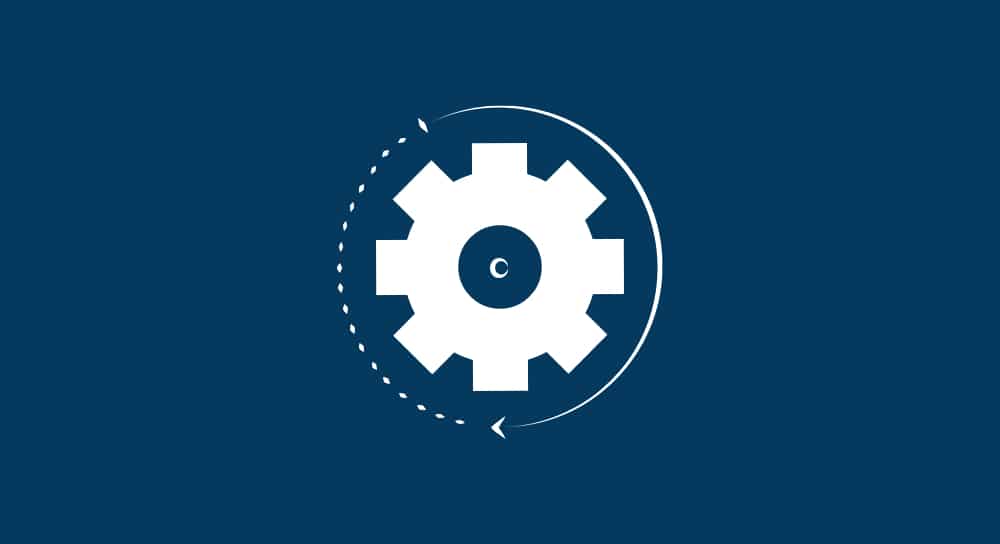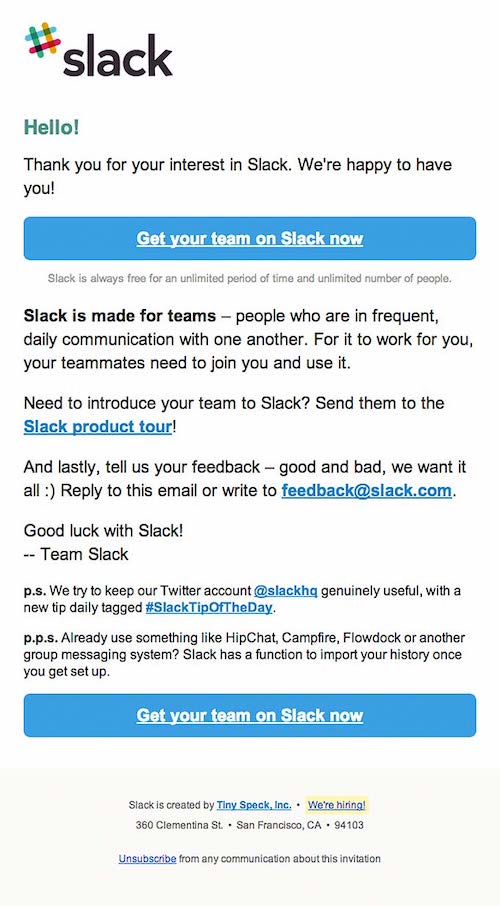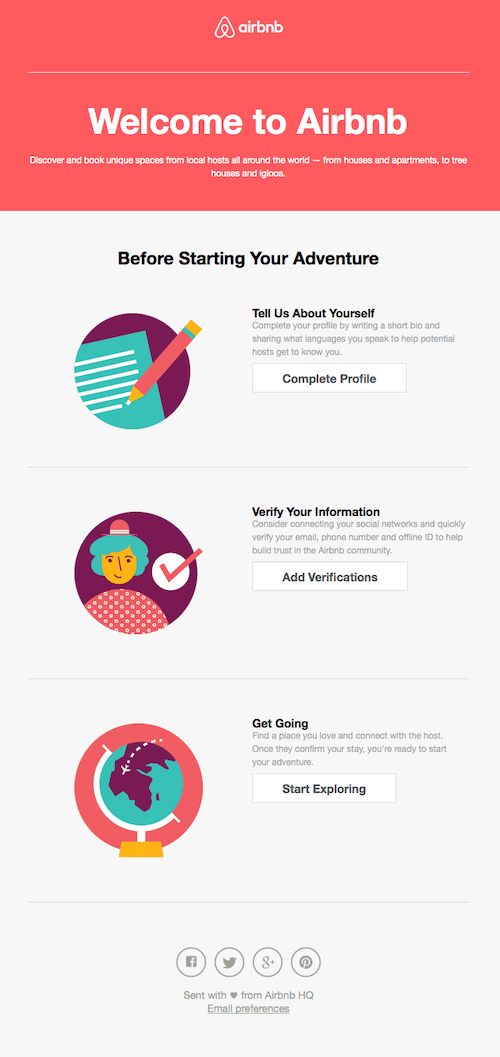How to acquire customers using email automation
You probably already know Emma is a SaaS (Software as a Service) product for creating and sending email marketing campaigns. Our process is fairly standard. Someone (like you) searches for a platform (like us), and then talks with a salesperson. Seems simple, right?
But selling a product or a service goes far beyond logistics. There has to be quality marketing and solid communication to make someone interested in your organization in the first place. And perhaps more importantly, your marketing communications need to maintain customer loyalty.
That’s where email automation comes in. But before we dig into how email automation can work for your Saas business, let’s first discuss the typical SaaS customer acquisition process. There are usually 4 stages:
Stage 1 (the visiting stage)
A person—we’ll call them Chris—visits a website for the first time.
Stage 2 (the signup stage)
Chris signs up for an email list or speaks to a sales representative.
Stage 3 (the activation stage)
Chris becomes a non-paying member and/or subscriber.
Stage 4 (the customer stage)
Chris pays money to use the service—hopefully for a long time with positive results.
As you can imagine, this represents a huge opportunity for growth. If you have 20,000 signups or leads per month, and you are converting them to customers at a rate of 10%, you’d be acquiring 2,000 new paying customers each month. Increasing that conversion rate by just 5% (to 15%) however, would net an extra 1000 new paying customers per month. That’s a 50% increase.
So, let’s translate that math into English. Spending time on interested leads and prospects is more financially smart than trying to attract new visitors. Not only are these people more likely to convert (they’ve already shown interest, after all), but you can also use email marketing to engage them rather than spending money on costly ads and awareness campaigns.
How to acquire customers using email automation
Step 1: plan and research
The first step in our journey is to investigate your existing emails, as well as how people use them to move through the sales funnel.
We tested this on a tech company’s site, and here is their process:
After someone signs up for an email subscription, they receive an automatic email confirming their account details: name, login email, etc. Then, a few days after they sign up, they receive a generic email about the company’s products.
So, in this tech company’s case, there’s not much to garner customer interest and generate revenue. If your company has a similar process, don’t worry—it simply means you have room to grow.
You likely have non-customer subscribers on your email list. You can use your data to learn how many people sign up and engage with your emails, as well as how many people sign up but stop engaging (and when they stop). Use this data to learn why people are signing up, where they’re signing up, and when they're losing interest.
Use the data you’ve collected to create an outline. This outline will list the kind of content needed to progress people through the funnel.
Step 2: create the email nurture
Once you know which content is of interest to your subscribers, as well as what makes them engage, you can begin to build your nurture funnel.
This nurture can be as simple or as complex as you want. An example might be:
- Welcome email
- Product tour or platform introduction
- Content-based email
- Case study
Welcome email
For your welcome email, you’ll want to introduce your company and provide information about where to find resources of interest. You may even include a discount code to incentivize impulse purchases.
In the Slack email below, the goal is obvious: They want subscribers to make a purchase. However, Slack knows new subscribers might not be ready to commit, so the email provides an opportunity to take a product tour or provide feedback.
Source: Really Good Emails
Product tour or platform introduction
This email can serve as a way to make your product less intimidating. By providing a tour, you can advertise your features so non-paying customers know what they’re missing.
Content-based email
You can use an email like this to send helpful resources and content, positioning you as a thought leader for your subscribers. Plus, if you segment your list, you can send hyper-personalized content.
Below is an Emma example of a content-based email:
See more of our onboarding emails here.
Case study
For this email, you’re proving that you practice what you preach. This is a great chance for subscribers to see real people using your features. Below is an example of a case study email from our sister brand, Campaign Monitor.
Source: Campaign Monitor
Step 3: design and build the emails
With the email series planned and the data flowing in, the next step is building and designing your email campaign.
If you have a design team, you might lean on them to create bold emails. But even if you don’t have a design team, many ESPs (like yours truly) allow you to drag and drop beautiful designs into place. And in case you need a refresher on what makes good design, here’s a Q&A from Emma’s own art director.
Once the emails are designed, it’s time for your next step.
Step 4: testing & launch
The final step in the process? Testing emails prior to sending.
This step should not only assess responsiveness and multi-device usability, but you should also test any segmentation or dynamic content you’ve included.
You can certainly send tests to people in your organization who can look for typos and broken links, but you might also consider setting up a new client within your account.
You can then use this client to create fake subscribers with varying custom fields. This way, you’ll be able to verify the automation is working, and the right emails are being sent to the correct recipients on time.
And then take a deep breath, because you’re done! Your nurture should be set to process successfully.
Other emails you might send in your automated series
While we outlined a basic nurture above, there are other emails you might consider sending in your series.
Action email
You might send this to subscribers who have an account with you but haven’t taken any action on your site yet: no downloads made, no account details added, etc.
For instance, the Airbnb email below encourages subscribers to engage with the platform and add more information about themselves.
Source: Really Good Emails
Survey email
Once a subscriber finally makes a purchase with you, a survey is a great opportunity to ask them how the experience was. Survey emails don’t have to be long, and they can often be very visual and interactive.
If the customer provides a negative score, you can extend the survey to learn more and try to improve their experience, rather than losing their business.
Wrap up
Hopefully, this how-to gives you the courage to turn your emails into an automated success strategy—changin potential customers into loyal patrons.
Need help automating your workflows? Emma is the automation tool that can help you attract subscribers, turn them into customers, and maintain a consistent experience. Learn more by talking to one of our experts.
Your turn: What other types of automated email campaigns do you send? And how have they helped you grow your business. Share your experience and best practices with our readers so we can all learn together.
MOST RECENT ARTICLES
Want to engage your audience and grow your brand? Try Emma's robust easy-to-use product today.

















